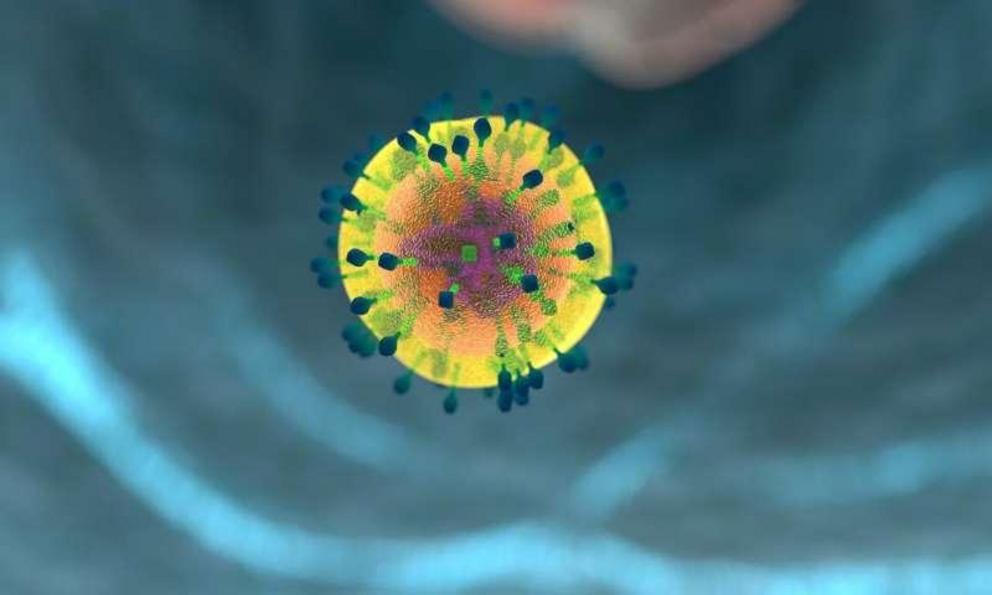Cells use concentration gradients as a compass
Biophysicists at Ludwig-Maximilians-Universitaet (LMU) in Munch have developed a new theory, which accounts for the observation that cells can perceive their own shapes, and use this information to direct the distribution of proteins inside the cell.
Many cellular processes are critically dependent on the precise distribution and patterning of proteins on the cell membrane. Diverse studies have shown that, in addition to protein-protein interactions and transport processes, cell shape can also have a considerable impact on intracellular pattern formation. Conversely, there are patterning processes in which any dependence on cell form would be deleterious. Using starfish oocytes as a model system, LMU physicists led by Professor Erwin Frey have now explained how robust protein patterns can emerge in the face of drastic changes in cell shape. As Frey and colleagues report a new study that appears in the journal Nature Physics, a concentration gradient formed within the cell itself encodes the shape information of the cell and gets decoded by self-organized protein patterns.
Starfish oocytes are relatively large and transparent, and are therefore well suited for biochemical investigations. Just before meiotic cell division, a wave of membrane contraction passes along the cell membrane towards the position where the cell divides asymmetrically. This contraction wave is triggered by the membrane-bound enzyme called Rho, which's activity propagates as a pulse over the membrane. The wave progresses from what is known as the vegetal pole of the oocyte to the animal pole, where the nucleus is located, and divides asymmetrically as the wave arrives.
To study the influence of changes in cell shape on this process, the researchers placed single oocytes in differently shaped microchambers, thus forcing the cells to adopt the geometry imposed by the boundary of each container. "We found that, although the pulse of Rho activation propagates in a correspondingly altered manner in the deformed cells, it always reaches the position at which the nucleus lies," says Frey. "This fascinating observation proves that the Rho pulse recognizes the shape of the cell and adapts to it."
Self-organized protein patterns can decode information about the cell shape
To understand the mechanism behind this remarkable adaptability, the team went on to develop a biophysical theory that accounts for this finding. The model is based on the earlier discovery that the cell-cycle regulator Cdk1 is asymmetrically distributed in the oocyte cytoplasm, where it forms a concentration gradient that extends from the nucleus into the cytoplasm and decays with time. This gradient enables the proteins on the membrane to adapt to the cell shape.
"The key insight is that the protein that activates Rho measures the gradient close to the membrane and marks a threshold concentration of the gradient: It forms a front-like concentration profile on the membrane, such that the front is positioned exactly at the threshold concentration. At this front position, the Rho activator, in turn, locally triggers an activity pulse of Rho." says Wigbers, one of the first-authors of the article. As the gradient decays, the position of this threshold value moves at varying speed along the membrane, depending on the cell shape. Thus, via this hierarchy of protein concentration profiles, the shape information that is encoded in the gradient gets transformed into a mechanochemical response—the contraction wave that passes over the membrane.
"Our results underline the significance of the self-organization of hierarchical protein patterns for the understanding of biological functions," says Frey. In effect, the authors have integrated two major paradigms in the field of protein pattern formation—self-organization based on reaction-diffusion mechanisms and the exploitation of positional information. "We believe that such a mechanism, which utilizes a hierarchy of protein patterns to encode information that reflects cell shape, could represent a general physical principle for the recognition and regulation of cell shape," Frey concludes.
More information: A hierarchy of protein patterns robustly decodes cell shape information. Nat. Phys. (2021). doi.org/10.1038/s41567-021-01164-9
Journal information: Nature Physics
Provided by Ludwig Maximilian University of Munich

